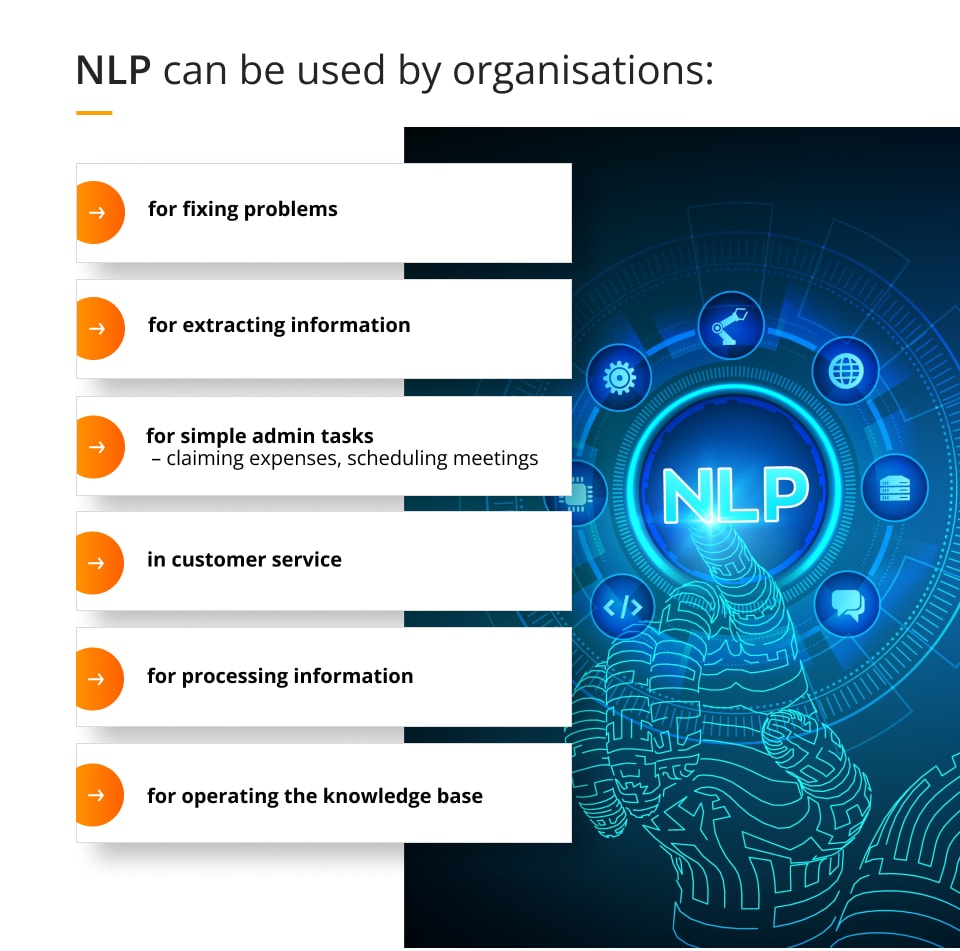
How do NLP and IDP address business challenges?
We are surrounded by data. Just imagine that every day we produce about 328.77 million terabytes of it – the number sounds so absurd it’s almost impossible to imagine.
On the other hand, “data is the new oil, valuable, but if unrefined it cannot really be used”. If used wisely it brings important benefits to every organisation. So how to process those tones of data to achieve what we are after? One of the answers is NLP and IDP.
Challenges around data
Data is used by organisations of all sectors: insurance, legal, finance, marketing, pharmaceutical. And in all of them it presents similar challenges. The most important of them is the sheer quantity of it in different documents and systems – just think about all contracts, receipts, images, invoices that you deal with in your everyday life!
Processing them is extremely monotonous: it consists of repetitive activities such as entering information in the right place, classifying documents.
Very often employees need to process multiple documents and information from clients at the same time, which can be very error-prone. There are also different types of documents they take care of, and each can have a very different way of being filled.
Another important challenge here is prioritising when it comes to customer service – how to extract clients’ opinions about our organisation and how to understand which information is the most important one?
What is NLP?
An answer to many data-related challenges and problems in business is NLP – Natural Language Processing. We can describe it as a field of artificial intelligence (AI) and computational linguistics that focuses on the interaction between computers and human language.
Its primary goal is to enable computers to understand, interpret and generate human language in a way that is both valuable and meaningful.
NLP is often used in IDP (Intelligent Document Processing) to enhance the automation of document-related tasks. It allows to smartly process documentation, no matter whether it’s a PDF, a Word document, a scan or an audio file. With the right tools, all of those forms can be processed, structured and converted.
Examples of using NLP in business
Automation using NLP and processing of language is being used in business more and more often. Let’s look at when exactly it can be used, and which benefits it may bring to your organisation.
NLP can be used by organisations:
- for fixing problems
When something is broken and you want to quickly find a solution, you can create a query around it and, given the huge amount of available content, find a suitable answer. - for extracting information
When you need certain information, you can enter a query about a specific application and the system finds the necessary information for you. - for simple admin tasks – claiming expenses, scheduling meetings
Employees who travel for business need to deal with bills and receipts, which can get lost really easily. With NLP it’s enough to take a photo of those documents and immediately transfer them to the system.
NLP tools can be also used as an assistant that analyses available dates, sends invitations, and later summarises the meetings by analysing the text spoken on the call and extracting key insights or things to do from the transcript.
An interesting use case of NLP is automatic grouping of files according to their subject or other filters and automatic recognition of content in the document and sending it to the appropriate person/place. - in customer service
NLP tools can be used in chatbots that handle customer requests quickly, in contrast to hotlines that are known for long waiting times and queues. With NLP your case can be handled automatically by entering it into the chatbot, either as a text or as a voice message.
An interesting use case of NLP tools is also sorting out reviews and opinions. If there is a lot of them, you can ask about sentiment and quickly read the summary and general conclusions instead of a large number of entries. You can also use such a sentiment search to analyse your own business, for example with customer satisfaction surveys. You can easily find information about things to improve and focus on dealing with them. - for processing information
IDP system are useful when undertaking social media analysis to quickly alert about disasters and important events thanks to the analysis of people’s posts. As users often post photos and information if they witness something important, a language processing tool can create alarm messages on this basis.
NLP can also be used to generate questions for large texts, which can be useful when creating an FAQ. - for operating the knowledge base.
An interesting example of NLP use case was given by one of our clients:
Can NLP be understood as a threat to the work done by humans?
Despite what some people say, NLP is not a threat to people and their work but is intended to support them. The important thing is to have the right approach: analyse what is best to automate/handle using NLP to help humans with easy and repeatable tasks, so that they can be tasked with things that are more difficult and require their attention. Such an approach can significantly reduce costs.
Another benefit is that people do not get bored doing the same, simple things over and over again, but can become more creative and innovative in tasks that really require a human touch. Moreover, when someone does the same repetitive thing all the time, they are more likely to eventually make a mistake because of distraction – the automation of these activities reduces the risk of errors.
Companies need automation of specific business processes that are time-consuming and NLP can solve the problem, but it’s important to know NLP cannot deal with everything – a person is still needed to supervise the operation of the automated system.
Keen to know more about NLP and how to use it to your advantage? Get in touch with us – our experienced team of the best IT experts who can talk to you about the options of automating your work using IDP and NLP. Together, let’s discuss the benefits of this approach and let’s make it a success!







